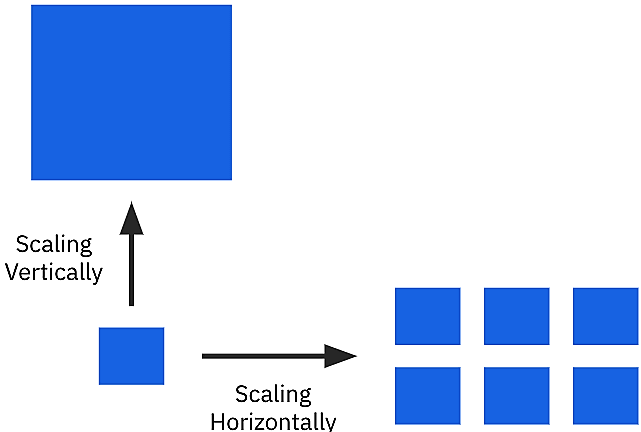12 Factor Apps
Who should read this document?
Any developer building applications which run as a service. Ops engineers who deploy or manage such applications.
Introduction
In the modern era, software is commonly delivered as a service: called web apps, or software-as-a-service. The twelve-factor app is a methodology for building software-as-a-service apps that:
Use declarative formats for setup automation, to minimize time and cost for new developers joining the project; Have a clean contract with the underlying operating system, offering maximum portability between execution environments; Are suitable for deployment on modern cloud platforms, obviating the need for servers and systems administration; Minimize divergence between development and production, enabling continuous deployment for maximum agility; And can scale up without significant changes to tooling, architecture, or development practices. The twelve-factor methodology can be applied to apps written in any programming language, and which use any combination of backing services (database, queue, memory cache, etc).
A set of rules and design principles making an app more stable and robust.
- making an application horizontally scalable.
- language and framework agnostic.
What are 12 Factor Apps and Why Should You Care?
1
2
3
4
5
6
7
8
9
10
11
12
l. Codebase: One codebase tracked in revision control, many deploys
ll. Dependencies: Explicitly declare and isolate dependencies
III. Config: Store config in the environment
IV. Backing services: Treat backing services as attached resources
V. Build, release, run: Strictly separate build and run stages
Vl. Processes: Execute the app as one or more stateless processes
VII. Port binding: Export services via port binding
VIII. Concurrency: Scale out via the process model
IX. Disposability: Maximize robustness with fast startup and graceful shutdown
X. Dev/prod parity: Keep development, staging, and production as similar as possible
XI. Logs: Treat logs as event streams
XII. Admin processes: Run admin/management tasks as one-off processes
Why care about 12 Factor?
- keep your app scalable
- enable agile workflow CI/CD
- portable between platforms-> moving aps from one platform to another
- baseline expectation for others
- avoid common problems -> many devs reinvent the wheel
vertical scaling vs horizontal scaling
Vertically:
- most easy and intuitive
- runs on 1 machine
- make the box bigger
- make 4gb ram to 8gb ram
- simply go bigger to run an application
Horizontally
- don’t make it bigger, add more servers
- load balancers
- shared storage
If you cannot scale horizontally you will be in a world of pain, because you will max out performance.
The 12 Factor Rules
flowchart TD
subgraph I["I"]
direction LR
1[Codebase]-->R1(One codebase tracked in revision control, many deploys)
end
subgraph II["II"]
direction LR
2[Dependencies] --> R2(Explicitly declare and isolate dependencies)
end
subgraph III["III"]
direction LR
3[Config]-->R3(Store config in the environment)
end
subgraph IV["IV"]
direction LR
4[Backing services]-->R4(Treat backing services as attached resources)
end
subgraph V["V"]
direction LR
5[Build, release, run]-->R5(Strictly separate build and run stages)
end
subgraph VI["VI"]
direction LR
6[Processes]-->R6(Execute the app as one or more stateless processes)
end
subgraph VII["VII"]
direction LR
7[Port binding]-->R7(Export services via port binding)
end
subgraph VIII["VIII"]
direction LR
8[Concurrency]-->R8(Scale out via the process model)
end
subgraph IX["IX"]
direction LR
9[Disposability]-->R9(Maximize robustness with fast startup and graceful shutdown)
end
subgraph X["X"]
direction LR
10[Dev/prod parity]-->R10(Keep development, staging, and production as similar as possible)
end
subgraph XI["XI"]
direction LR
11[Logs]-->R11(Treat logs as event streams)
end
subgraph XII["XII"]
direction LR
12[Admin processes]-->R12(Run admin/management tasks as one-off processes)
end
I --- II --- III --- IV --- V --- VI --- VII --- VIII --- IX --- X --- XI --- XII
Background
The contributors to this document have been directly involved in the development and deployment of hundreds of apps, and indirectly witnessed the development, operation, and scaling of hundreds of thousands of apps via our work on the Heroku platform.
This document synthesizes all of our experience and observations on a wide variety of software-as-a-service apps in the wild. It is a triangulation on ideal practices for app development, paying particular attention to the dynamics of the organic growth of an app over time, the dynamics of collaboration between developers working on the app’s codebase, and avoiding the cost of software erosion.
Our motivation is to raise awareness of some systemic problems we’ve seen in modern application development, to provide a shared vocabulary for discussing those problems, and to offer a set of broad conceptual solutions to those problems with accompanying terminology. The format is inspired by Martin Fowler’s books Patterns of Enterprise Application Architecture and Refactoring.
Start daily exercises in the Code Gym


